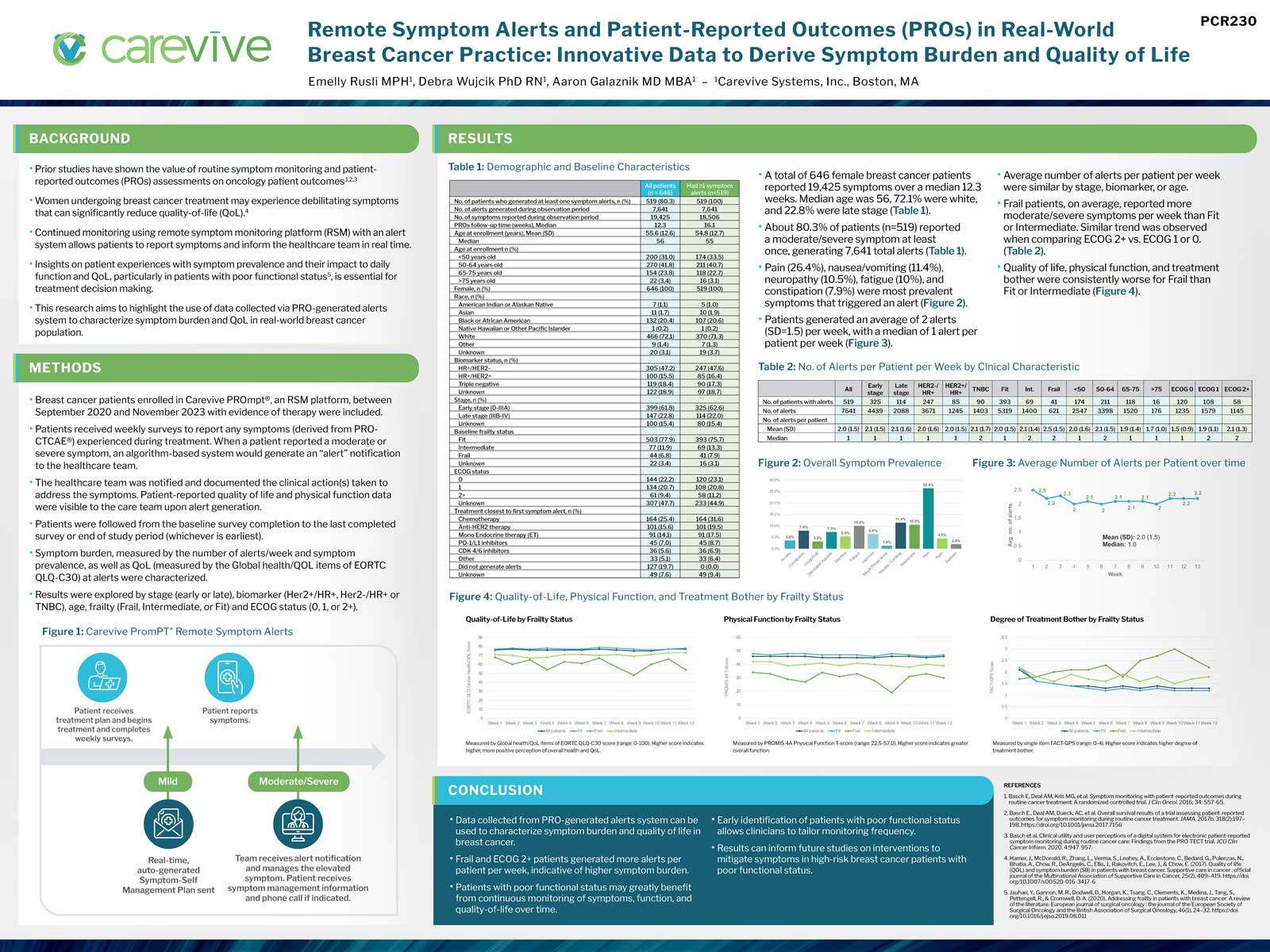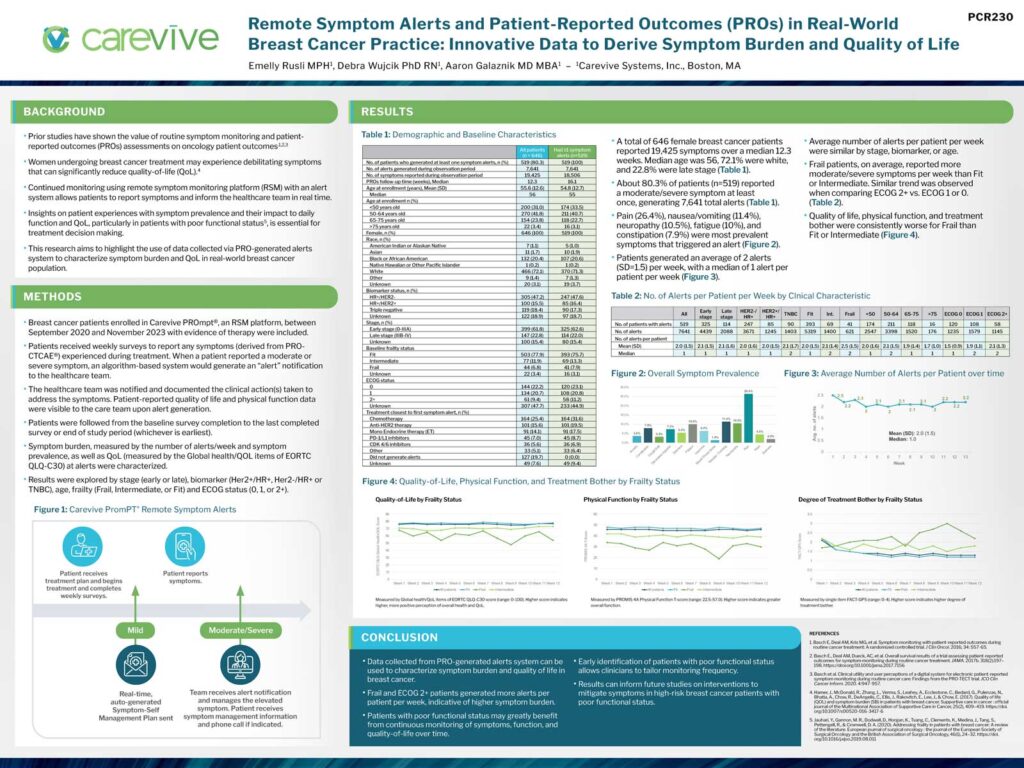
Authors:Emelly Rusli MPH1, Debra Wujcik PhD RN1, Aaron Galaznik MD MBA1
1 Carevive Systems, Inc., Boston, MA
Background
- Prior studies have shown the value of routine symptom monitoring and patientreported outcomes (PROs) assessments on oncology patient outcomes.1,2,4
- Women undergoing breast cancer treatment may experience debilitating symptoms that can significantly reduce quality-of-life (QoL).4
- Continued monitoring using remote symptom monitoring platform (RSM) with an alert system allows patients to report symptoms and inform the healthcare team in real time.
- Insights on patient experiences with symptom prevalence and their impact to daily function and QoL, particularly in patients with poor functional status5, is essential for treatment decision making.
- This research aims to highlight the use of data collected via PRO-generated alerts system to characterize symptom burden and QoL in real-world breast cancer population.
Methods
- Breast cancer patients enrolled in Carevive PROmpt®, an RSM platform, between September 2020 and November 2023 with evidence of therapy were included.
- Patients received weekly surveys to report any symptoms (derived from PROCTCAE®) experienced during treatment. When a patient reported a moderate or severe symptom, an algorithm-based system would generate an “alert” notification to the healthcare team.
- The healthcare team was notified and documented the clinical action(s) taken to address the symptoms. Patient-reported quality of life and physical function data were visible to the care team upon alert generation.
- Patients were followed from the baseline survey completion to the last completed survey or end of study period (whichever is earliest).
- Symptom burden, measured by the number of alerts/week and symptom prevalence, as well as QoL (measured by the Global health/QOL items of EORTC QLQ-C30) at alerts were characterized.
- Results were explored by stage (early or late), biomarker (Her2+/HR+, Her2-/HR+ or TNBC), age, frailty (Frail, Intermediate, or Fit) and ECOG status (0, 1, or 2+).
Conclusion
- Data collected from PRO-generated alerts system can be used to characterize symptom burden and quality of life in breast cancer.
- Frail and ECOG 2+ patients generated more alerts per patient per week, indicative of higher symptom burden.
- Patients with poor functional status may greatly benefit from continuous monitoring of symptoms, function, and quality-of-life over time.
- Early identification of patients with poor functional status allows clinicians to tailor monitoring frequency.
- Results can inform future studies on interventions to mitigate symptoms in high-risk breast cancer patients with poor functional status.

